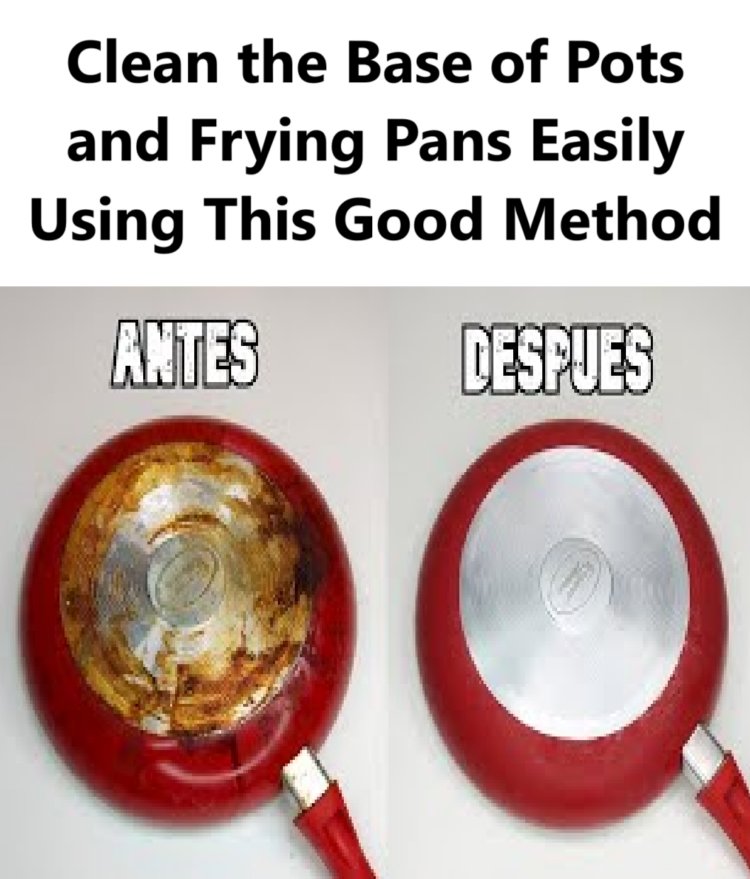ADVERTISEMENT
#### 3. **Scrub the Base Gently**
After soaking, take a non-abrasive scrub brush or sponge and gently scrub the base of the pan in circular motions. The grime should come off easily without you needing to put much elbow grease into it. Be sure to scrub the areas where the buildup is most noticeable, but avoid using harsh scrubbing pads or metal sponges, as these can scratch and damage the surface of your cookware.
#### 4. **Rinse and Inspect**
Once you’ve scrubbed away the residue, rinse the pan with warm water to remove any cleaning solution and loosened grime. Inspect the base for any remaining stains or buildup. If any residue remains, repeat the process or focus on those stubborn spots with a little more baking soda and vinegar.
#### 5. **Wash with Dish Soap**
After the base of the pan is free from grime and stains, wash the entire pan with dish soap and warm water to remove any lingering cleaning solution. This will ensure that no vinegar or baking soda residue remains, leaving your pan sparkling clean.
#### 6. **Dry the Pan**
After rinsing, dry the pan thoroughly with a clean cloth or paper towel. If you’re working with cast iron, be sure to dry the pan immediately to prevent rust. For stainless steel or nonstick pans, simply wipe down the surface and store it as usual.
### Tips for Maintaining the Clean Base of Your Cookware
– **Clean After Each Use**: To avoid buildup, it’s always best to clean your pots and pans after each use. If you notice any food sticking to the bottom, soak the pan in warm soapy water for a few minutes to loosen it before scrubbing.
– **Use a Cleaning Paste**: If the base of your pan has been heavily stained, you can make a paste using baking soda and a little water. Apply this paste to the base, let it sit for 10-15 minutes, and then scrub gently with a sponge.
– **Avoid High Heat**: Cooking on high heat can cause oil to burn and stick to the base of your pans, making it harder to clean. If possible, try to cook on medium heat and avoid using too much oil.
– **Regular Deep Cleaning**: For extra tough stains, consider doing a deep clean every few weeks by soaking your pans for a longer period or using specialized cookware cleaners made for your specific material.
### Why This Method Works
– **Baking Soda**: Baking soda is mildly abrasive and helps break down grease and grime. It’s also gentle enough to avoid damaging your cookware. Plus, it neutralizes odors and leaves your pots and pans smelling fresh.
– **White Vinegar**: Vinegar is a natural acid that helps dissolve mineral deposits, grease, and burnt food. It also acts as a deodorizer, leaving your cookware smelling clean and fresh.
– **Non-Abrasive Scrubbing**: By using a gentle scrub brush or sponge, you avoid scratching your cookware. This method ensures your pans stay in great condition, extending their lifespan and functionality.
### Conclusion: Effortless Cleaning for Sparkling Pots and Pans
Cleaning the base of pots and frying pans doesn’t have to be a chore. With this simple method using baking soda, white vinegar, and a little time, you can restore your cookware to its former glory without harsh chemicals or excessive scrubbing. By maintaining your pots and pans regularly, you’ll not only keep them looking great but also ensure they perform well for years to come.
Next time you’re faced with stubborn stains or burnt-on food, try this easy and effective method. It’s a natural, safe, and economical way to keep your kitchenware sparkling clean and ready for your next culinary adventure!
ADVERTISEMENT
